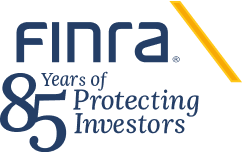FINRA does not regulate mutual funds directly, but regulates the broker-dealers and registered representatives that sell mutual funds. In this capacity, FINRA enforces rules on mutual fund advertising, sales practices, including the sales loads that broker-dealers may charge, the incentives provided to registered representatives and the execution of mutual fund portfolio transactions.
FINRA is responsible for the Central Registration Depository (CRD®) program, which supports the licensing and registration filing requirements of the U.S. securities industry and its regulators. The CRD program covers the registration records of broker-dealer firms, branch offices and their associated individuals, including their qualification, employment and disclosure histories; it also directs the processing of form filings, fingerprint submissions, collection and disbursement of registration-related fees, qualification exams and continuing education sessions. The registration filing requirements of the CRD program are being integrated into the new FINRA Gateway system.
FINRA’s Examinations team has undertaken changes to create efficiencies before, during and after the exam process to continuously improve the program. On this episode, three senior leaders of the team join us to detail some of the recent changes, including the introduction of thematic reviews, changes to the post-exam closeout process and more.
The best tool FINRA provides when it comes to firms developing their annual compliance program is now available. On this episode, three Member Supervision senior leaders join us to dig into some of the new and noteworthy regulatory topics in the 2023 Report on FINRA’s Examination and Risk Monitoring Program.
The FINRA Institute CRCP Scholarship Program provides small firms-those with less than 150 registered representatives-with a financial grant covering full tuition for the entire program, including room and board for the residential courses at Wharton.
This video series helps firms currently in the Membership Application Program (MAP) process including those who are considering registering a new broker-dealer firm or filing a continuing membership application. The five short videos outline the various stages of the process and highlight key resources.Membership Application Program - MAP TriageThis video addresses the MAP intake process,
TO: All NASD Members and Level 2 and Level 3 Subscribers
An additional 49 issues will voluntarily join the NASDAQ National Market System on Tuesday, November 22, bringing the total number of NMS securities to 635. These 49 issues meet the SEC's criteria for voluntary designation, which include average monthly trading volume of 100,000 shares and a minimum bid price of $5.
The 49
The 2023 Report on FINRA’s Examination and Risk Monitoring Program (the Report) provides member firms with insight into findings from the recent oversight activities of FINRA’s Member Supervision, Market Regulation and Enforcement programs (collectively, regulatory operations programs).
Prospective FINRA member firms must seek approval for new FINRA membership through the submission of a New Membership Application (NMA or Form NMA) in accordance with FINRA Rule 1013 (New Member Application and Interview). Existing FINRA member firms that are contemplating a material change in ownership, control, or business operations must submit a Continuing Membership Application (CMA or Form CMA) in accordance with FINRA Rule 1017 (Application for Approval of Change in Ownership, Control, or Business Operations). Both types of applications are reviewed by FINRA’s Membership Application Program (MAP) Group.
In both 2017 and 2018, FINRA issued Reports on Examination Findings in response to firms’ requests that we make publicly available a summary of key findings from FINRA’s examinations of member firms. Firms use this information, as well as effective practices observed by FINRA at certain firms, to anticipate potential areas of concern and improve their procedures and controls. (We subsequently refer to the two prior years’ documents as the “2017 Report” and the “2018 Report.”)
